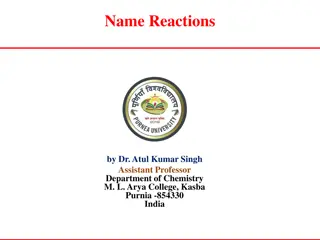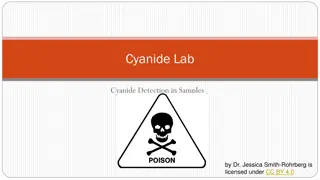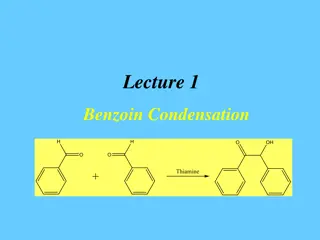
Sulfonamide Antibiotics and Their Side Effects
Explore the world of sulfonamide antibiotics, their mechanism of action, potential side effects, and drug interactions. Learn about the group members, common side effects like dizziness and photosensitivity, as well as rare effects such as liver damage and urinary crystals. Discover how sulfonamides can interact with drugs like warfarin and cyclosporine, affecting their effectiveness. Stay informed about the sulfonamide group to ensure safe and effective use in medical settings.
Download Presentation

Please find below an Image/Link to download the presentation.
The content on the website is provided AS IS for your information and personal use only. It may not be sold, licensed, or shared on other websites without obtaining consent from the author. If you encounter any issues during the download, it is possible that the publisher has removed the file from their server.
You are allowed to download the files provided on this website for personal or commercial use, subject to the condition that they are used lawfully. All files are the property of their respective owners.
The content on the website is provided AS IS for your information and personal use only. It may not be sold, licensed, or shared on other websites without obtaining consent from the author.
E N D
Presentation Transcript
SULFONAMIDE AND CYANIDE GROUP 2 MLS512 PRESENTATION 1
Members of group 2 OGUNYEMI TOSIN ONOKPE OGHENEFEJIRO DANDUTSE HAJARA TIJJANI 15/MHS06/023 ESHEGBE EZEKIEL 15/MHS06/043 (PRESENTER) 15/MHS06/051 14/MHS06/022 2
SULFONAMIDE Sulfonamides (sulfa drugs) are drugs that are derived from sulfanilamide, a sulfur-containing chemical. Most sulfonamides are antibiotics, but some are prescribed for treating ulcerative colitis (Slatore and Tilles, 2004). 3
Sulfonamide antibiotics work by disrupting the production of dihydrofolic acid, a form of folic acid that bacteria and human cells use for producing proteins (Knowles et al., 2001). 4
SIDE EFFECT Sulfonamides may cause: Dizziness Headache Diarrhea Anorexia Nausea Vomiting and Serious skin rashes (Armstrong, 2002). 5
Sulfonamides also may cause sensitivity to the sun that leads to extensive sunburn after exposure to sunlight (photosensitivity). Patients receiving sulfonamides should avoid excessive exposure to sunlight and should wear sunscreen (Armstrong, 2002). 6
Other rare side effects include liver damage, low white blood cell count (leucopenia), low platelet count (thrombocytopenia), and anemia. Formation of urinary crystals which may damage the kidney. Adequate hydration is needed to prevent the formation of urinary crystals. 7
DRUGS INTERACT WITH SULFONAMIDES Sulfonamides can increase the blood- thinning effects of warfarin (Coumadin), possibly leading to abnormal bleeding. The increased metabolism (break-down and elimination) of cyclosporine by the liver caused by sulfonamides (reduces the effectiveness of cyclosporine and can add to the kidney damage caused by cyclosporine (Knowles et al., 2001). 8
All sulfonamides can crystallize in the urine when the urine is acidic. Since methenamine (Hiprex, Urex, Mandelamin e) causes acidic urine, it should not be used with sulfonamides (Brackett et al., 2004). 9
CYANIDE Cyanide is any chemical that contains a carbon-nitrogen (CN) bond. Cyanide has been used as a chemical warfare agent and an agent for terrorist attack (Armstrong, 2002). It cause an almost immediate death. FORMS OF CYANIDE sodium cyanide (NaCN) potassium cyanide (KCN) hydrogen cyanide (HCN) cyanogen chloride (CNCl) Cyanide exists in gaseous, liquid and solid forms. (Greenfield et al., 2002). 10
Cyanide exposure most often occurs via inhalation or ingestion but liquid cyanide can be absorbed through the skin or eyes. Once absorbed, cyanide enters the blood stream and is distributed rapidly to all organs and tissues in the body (Brennan et al., 1999). Severity depends on: The dose the type of cyanide Duration of exposure 11
Acute cyanide Acute cyanide poisoning Acute cyanide poisoning is relatively rare, and the majority of cases are from unintentional exposure.This condition is immediate and life- threatening Symptoms are sudden and severe and they include: Difficulty in breathing Seizure Loss of consciousness Cardiac arrest poisoning (Martin and Adams, 2003). 12
Chronic cyanide Chronic cyanide poisoning Chronic cyanide poisoning results from exposure to smaller amounts over time. Symptoms are often gradual and increase in severity as time goes on (Baud,2007). poisoning 13
Early symptoms may include: -Headache -drowsiness -nausea -vertigo -bright red flush Additional symptoms may include -dilated pupils -clammy skin -slower, shallower breaths -weaker, more rapid pulse -convulsions. -vomiting 14
ASSESSMENT Blood carbon monoxide concentration (carboxyhemoglobin level). blood carbon monoxide concentration can indicate how much smoke inhalation has occurred. Plasma or blood lactate level. . Elevation in the blood lactate level is a sensitive marker for cyanide toxicity Plasma cyanide concentration Methemoglobin level(Citroner,2018). 15
cyanide antidote kit The cyanide antidote kit consists of three medications given together: amyl nitrite, sodium nitrite, and sodium thiosulfate. The amyl nitrite is given by inhalation for 15 to 30 seconds, while sodium nitrite is administered intravenously over three to five minutes. Intravenous sodium thiosulfate is administered for about 30 minutes (Borron et al., 2007). Hydroxocobalamin (Cyanokit) Hydroxocobalamin will detoxify cyanide by binding with it to produce nontoxic vitamin B-12. This medication neutralizes cyanide at a slow enough rate to allow an enzyme called rhodanese to further detoxify cyanide in the liver (DesLauriers et al., 2006). 16
Prevention of Prevention of cyanide Take Take proper precautions against a home fire. proper precautions against a home fire. Install and maintain smoke detectors. Avoid using space heaters and halogen lamps, and avoid smoking in bed. Childproof your home. Childproof your home. If there are young children, childproofing is essential especially if there are risk of occupational exposure. Keep containers holding toxic chemicals secured and the cabinets they re kept in locked. Follow work safety regulations. Follow work safety regulations. When working with cyanide, use removable absorbent paper to line work surfaces. Keep quantities and container sizes in the work area as small as possible. Leave all chemicals in the lab or factory. Don t bring home potentially contaminated clothing or work gear. cyanide poisoning poisoning 17
REFERENCES Martin CO, Adams HP Jr. (2003). Neurological aspects of biological and chemical terrorism: a review for neurologists. Arch Neurol. 60(1):21-5. Borron, S.W. Baud, F.J. Barriot, P. Imbert, M. and Bismuth, C. (2007). Prospective study of hydroxocobalamin for acute cyanide poisoning in smoke inhalation. Ann Emerg Med. 49(6):794-801, 801.e1-2. Brennan, R.J. Waeckerle, J.F. Sharp, T.W. Lillibridge, S.R. (1999). Chemical warfare agents: emergency medical and emergency public health issues. Ann Emerg Med.34(2):191-204. Greenfield, R.A. Brown, B.R. Hutchins, J.B. Iandolo, J.J. Jackson, R. Slater, L.N. (2002). Microbiological, biological, and chemical weapons of warfare and terrorism. Am J Med Sci. 323(6):326-40. 18
Baud, F. J. Cyanide: critical issues in diagnosis and treatment. Hum Exp Toxicol. 2007 Mar. 26(3):191-201. Citroner, G. (2018). What is cyanide poisoning Assessed from https://www.healthline.com/health/cyanide-poisoning.Retrieved 25th February,2020. Slatore CG, Tilles SA (2004). Sulfonamide hypersensitivity. Immunology and Allergy Clinics of North America. 24 (3): 477 490. Knowles, S. Shapiro, L and Shear, N.H. (2001). Should Celecoxib Be Contraindicated in Patients Who Are Allergic to Sulfonamides?. Drug Safety. 24 (4): 239 247. 19
Brackett, C.C. Singh, H. and Block, J.H. ( 2004). Likelihood and mechanisms of cross-allergenicity between sulfonamide antibiotics and other drugs containing a sulfonamide functional group. Pharmacotherapy. 24 (7): 856 870. Armstrong, J. (2002).Chemical warfare. RN. 65(4):32-39. 20






















